Bayesian confidence in optimal decisions
- PMID: 39023934
- PMCID: PMC7617410
- DOI: 10.1037/rev0000472
Bayesian confidence in optimal decisions
Abstract
The optimal way to make decisions in many circumstances is to track the difference in evidence collected in favor of the options. The drift diffusion model (DDM) implements this approach and provides an excellent account of decisions and response times. However, existing DDM-based models of confidence exhibit certain deficits, and many theories of confidence have used alternative, nonoptimal models of decisions. Motivated by the historical success of the DDM, we ask whether simple extensions to this framework might allow it to better account for confidence. Motivated by the idea that the brain will not duplicate representations of evidence, in all model variants decisions and confidence are based on the same evidence accumulation process. We compare the models to benchmark results, and successfully apply four qualitative tests concerning the relationships between confidence, evidence, and time, in a new preregistered study. Using computationally cheap expressions to model confidence on a trial-by-trial basis, we find that a subset of model variants also provide a very good to excellent account of precise quantitative effects observed in confidence data. Specifically, our results favor the hypothesis that confidence reflects the strength of accumulated evidence penalized by the time taken to reach the decision (Bayesian readout), with the penalty applied not perfectly calibrated to the specific task context. These results suggest there is no need to abandon the DDM or single accumulator models to successfully account for confidence reports. (PsycInfo Database Record (c) 2024 APA, all rights reserved).
Figures

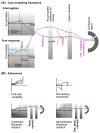


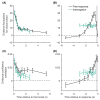
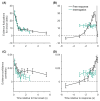




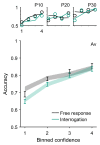



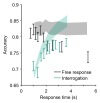

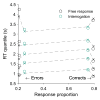
References
MeSH terms
Grants and funding
LinkOut - more resources
Full Text Sources

